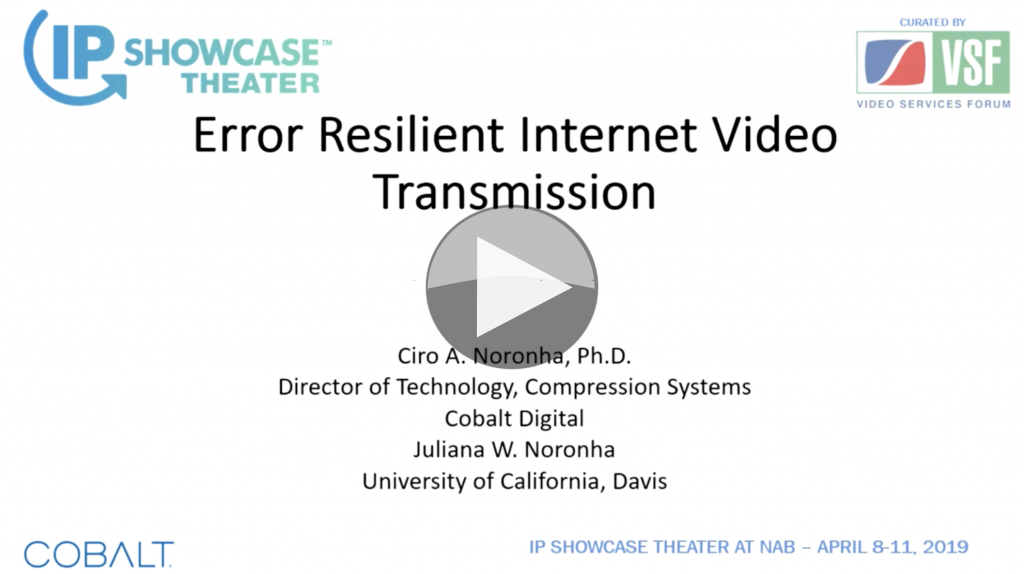Contribution via the internet is tricky but has great promise. With packet loss and jitter all over the place, how can you deliver perfect video?
Ciro Noronha from Cobalt Digital explains the two ways people get around the unreliability of the internet: FEC and retransmission. Forward Error Correction uses some maths to transmit extra data on top of the stream which allows the receiver to correct for any packet losses. This method is standard in satellite transmission where it is always used to add robustness.
Retransmission is different in that it requires a return channel. When a receiver spots a missing packet, it asks for it to be resent. Being that it has to wait for a reply, retransmission protocols like SRT, ARQ and RIST run with a configurable buffer which needs to be big enough for at least one round trip. FEC schemes also require a buffer as it needs to wait for a number of packets before it can complete the maths required.
Ciro introduces FEC and ARQ before presenting work showing experiments he’s run on both FEC and ARQ to see the limits of their signal-correcting capabilities and latency. He finishes explaining what RIST is and its status.
Bring yourself up to date with RIST!
Watch now!
Speaker
 |
Ciro Noronha Director of Technology, Cobalt Digital |


